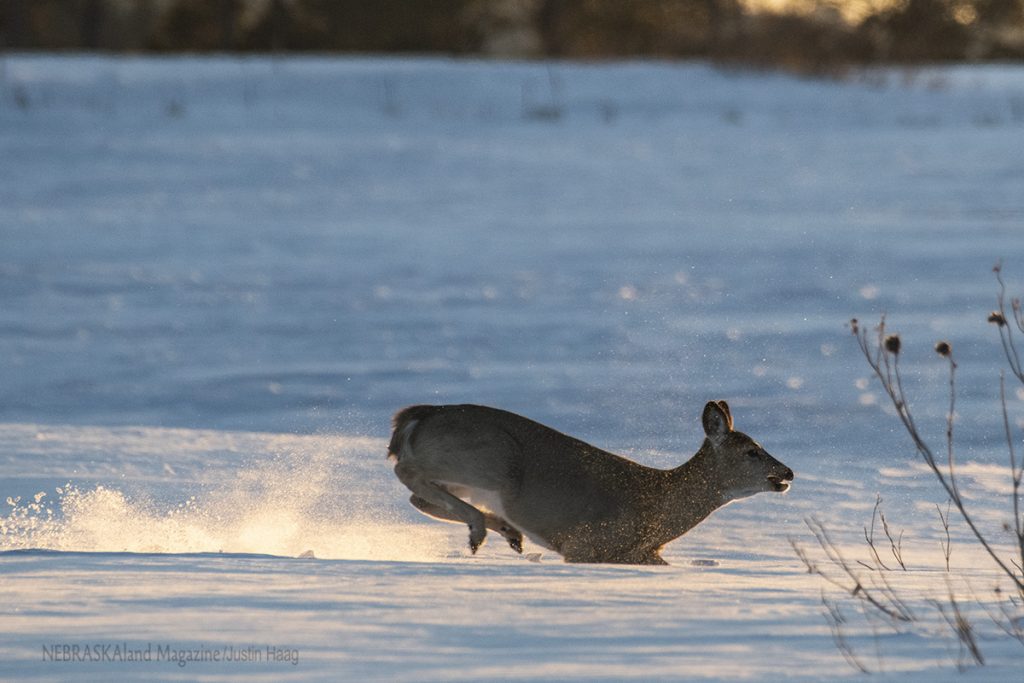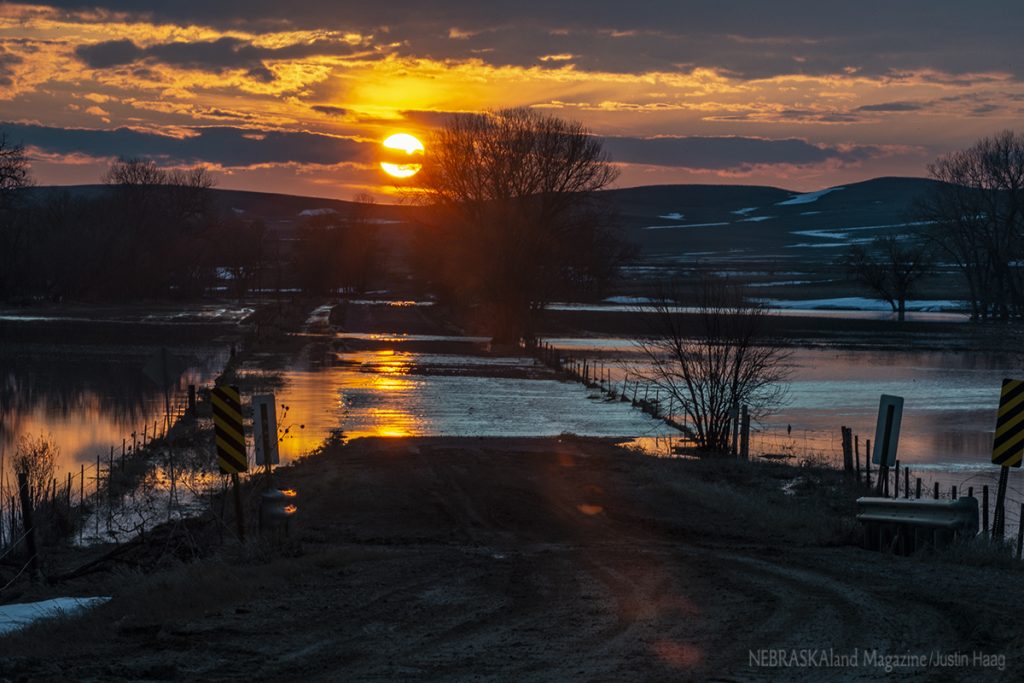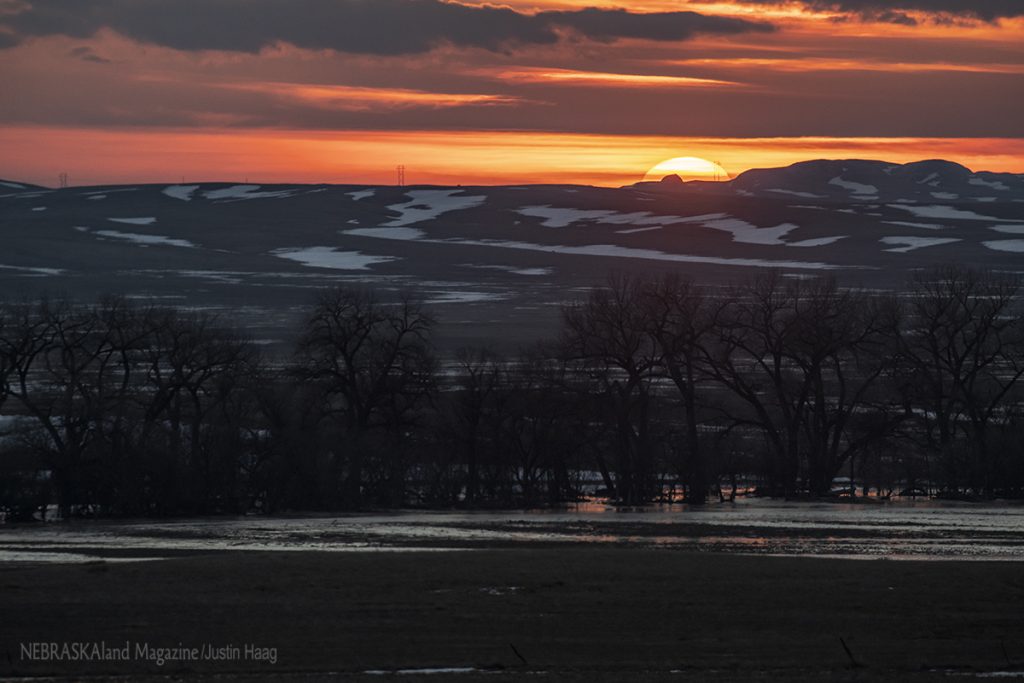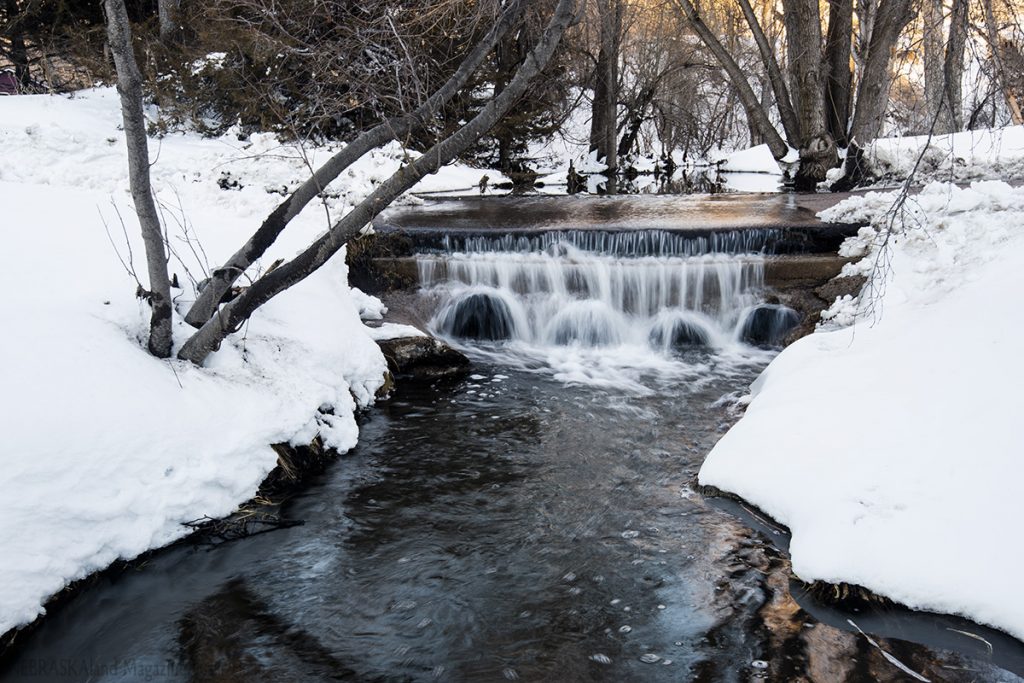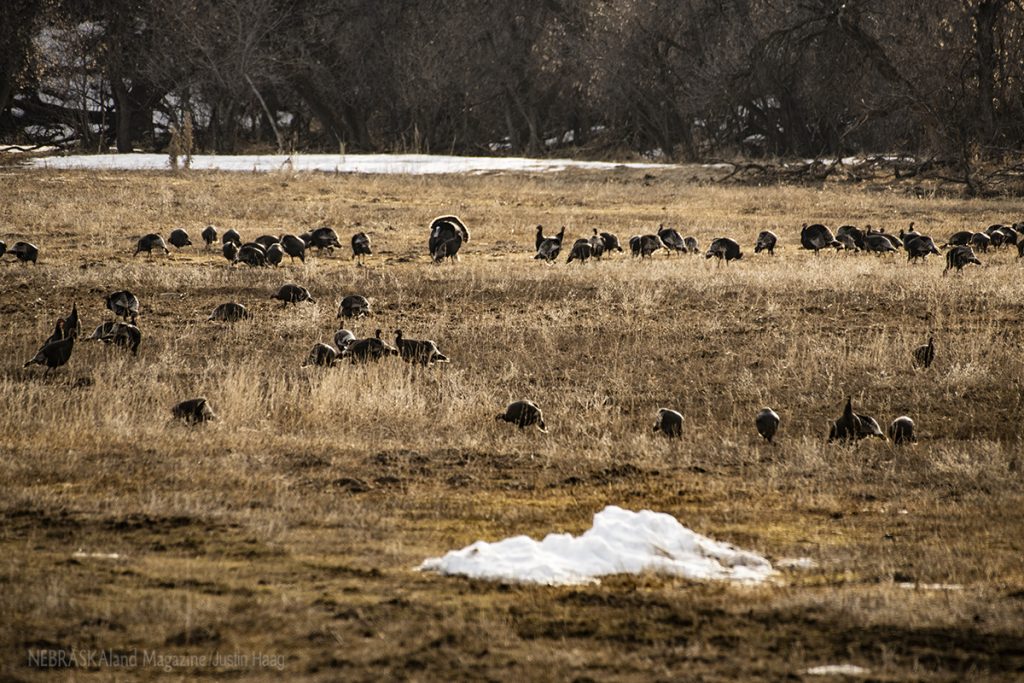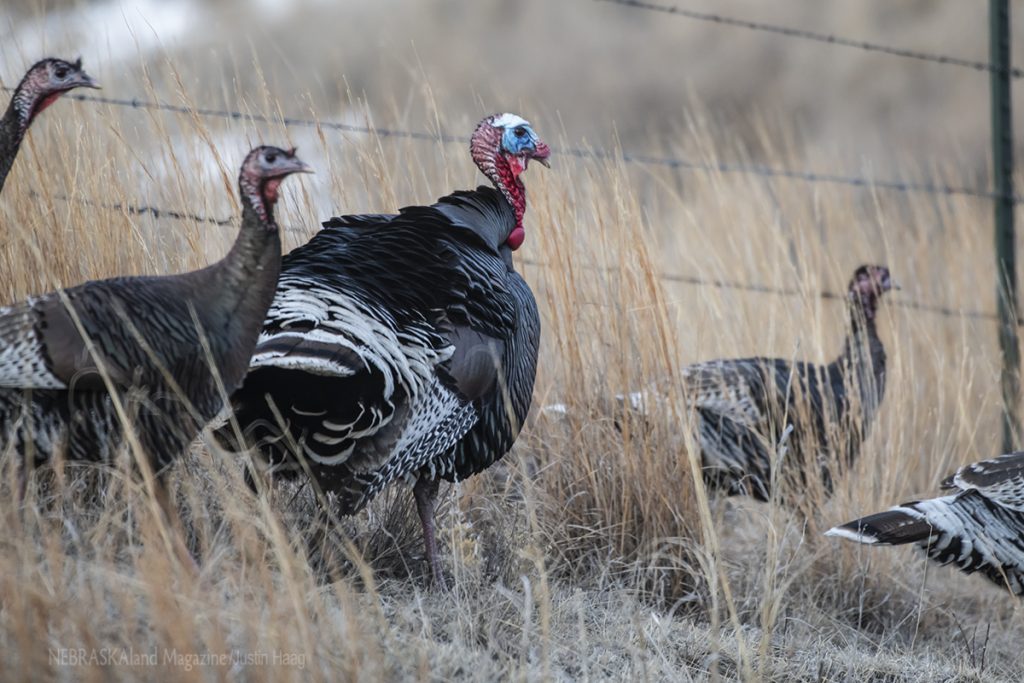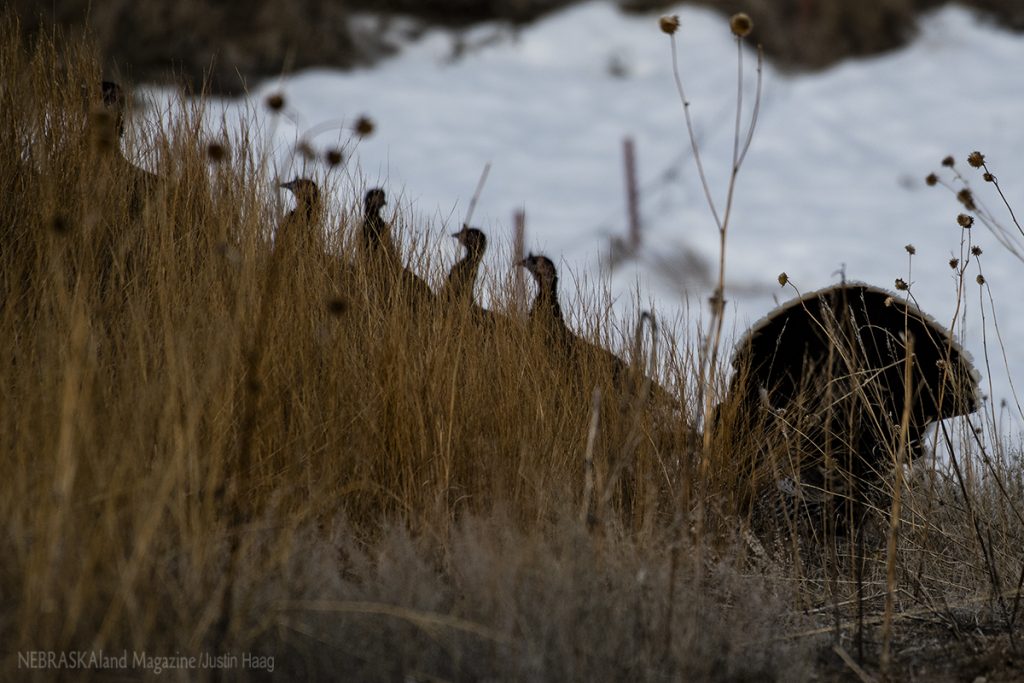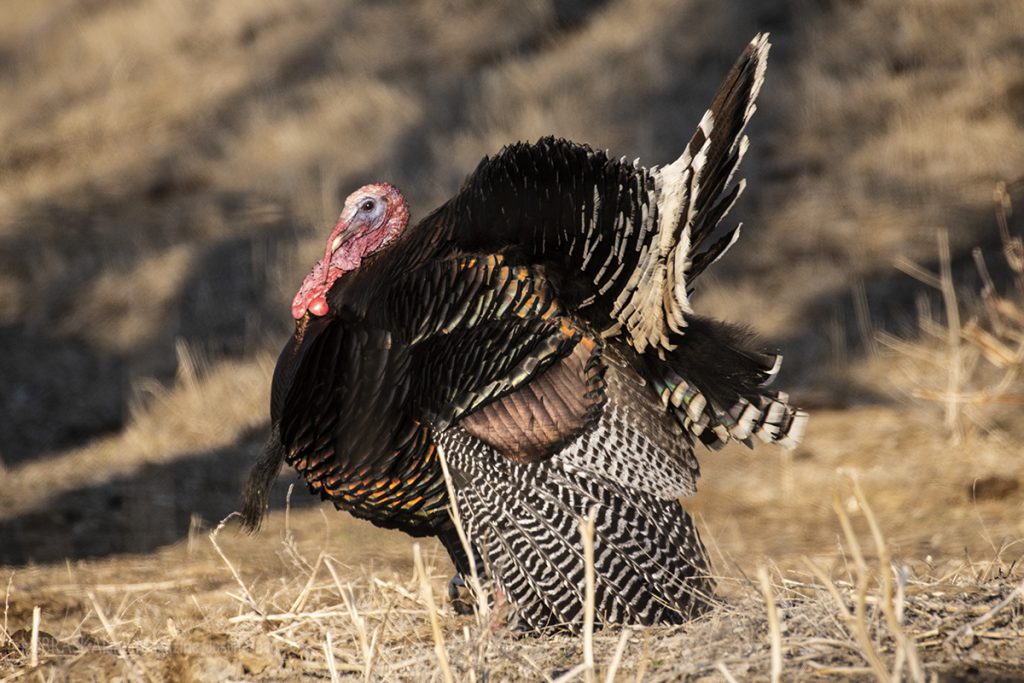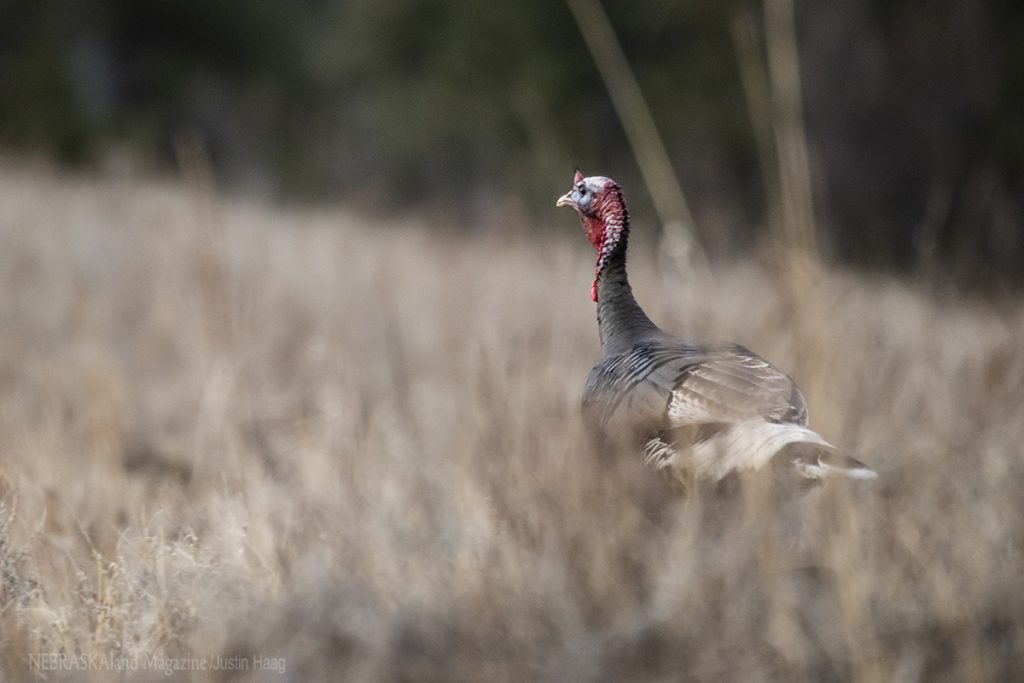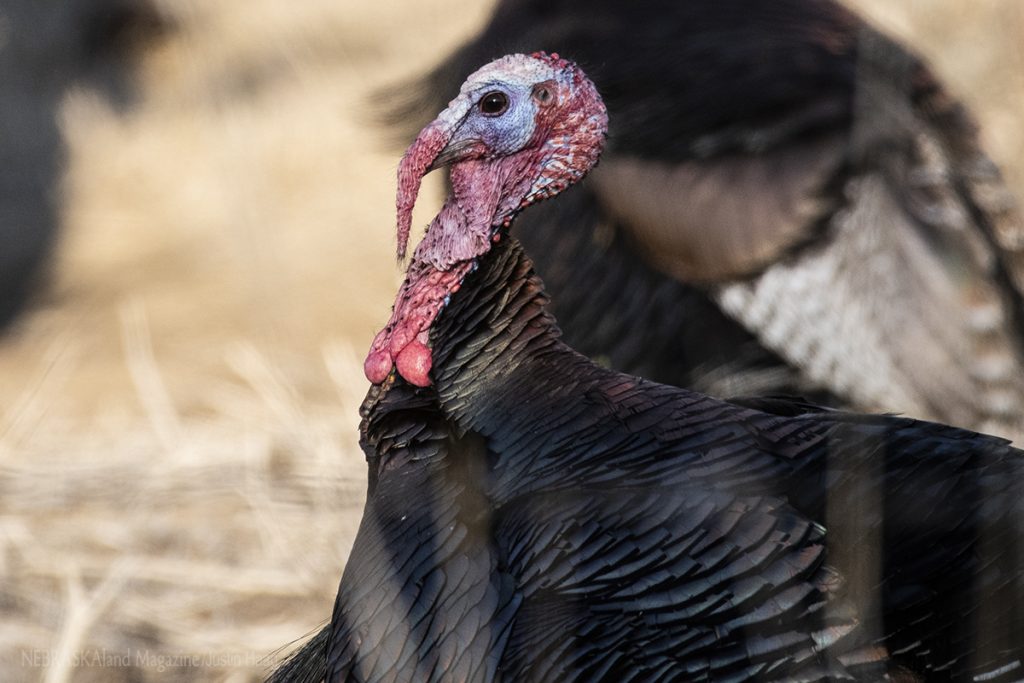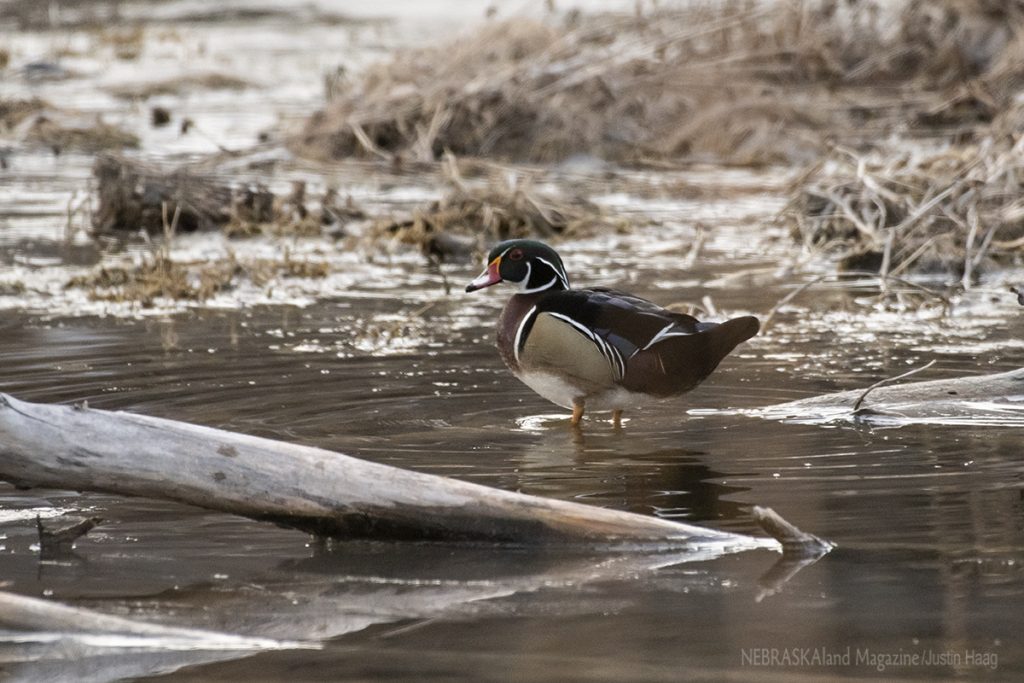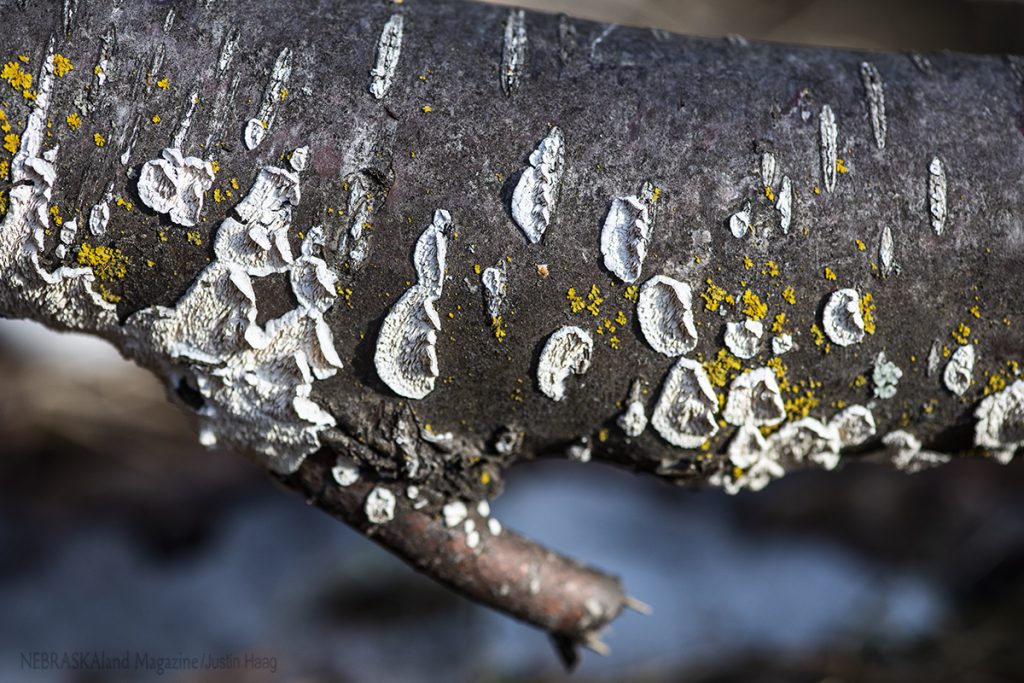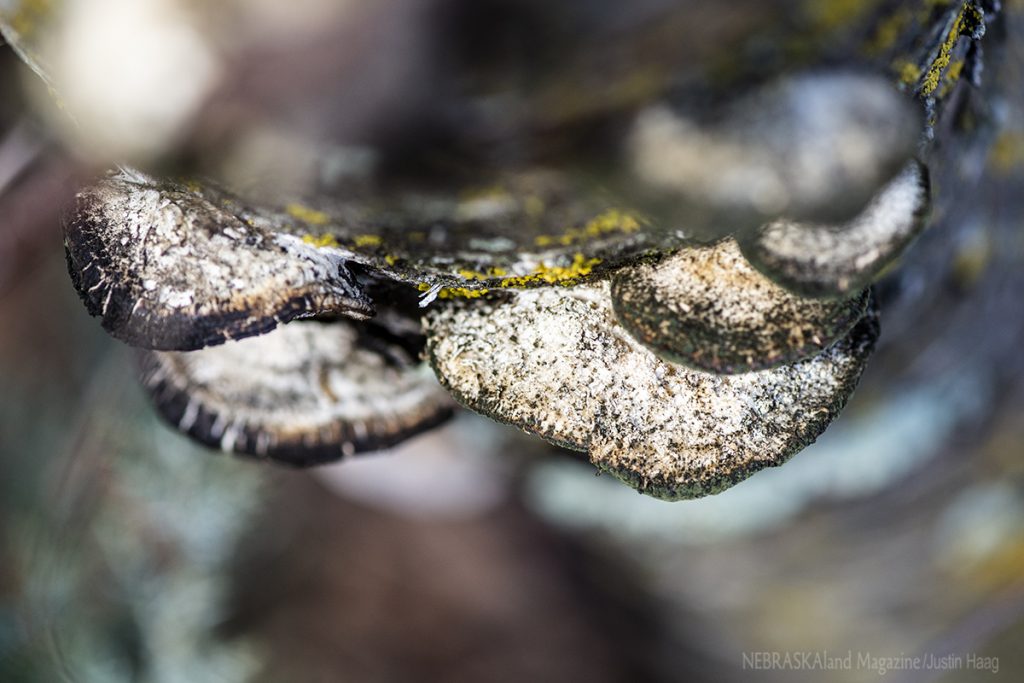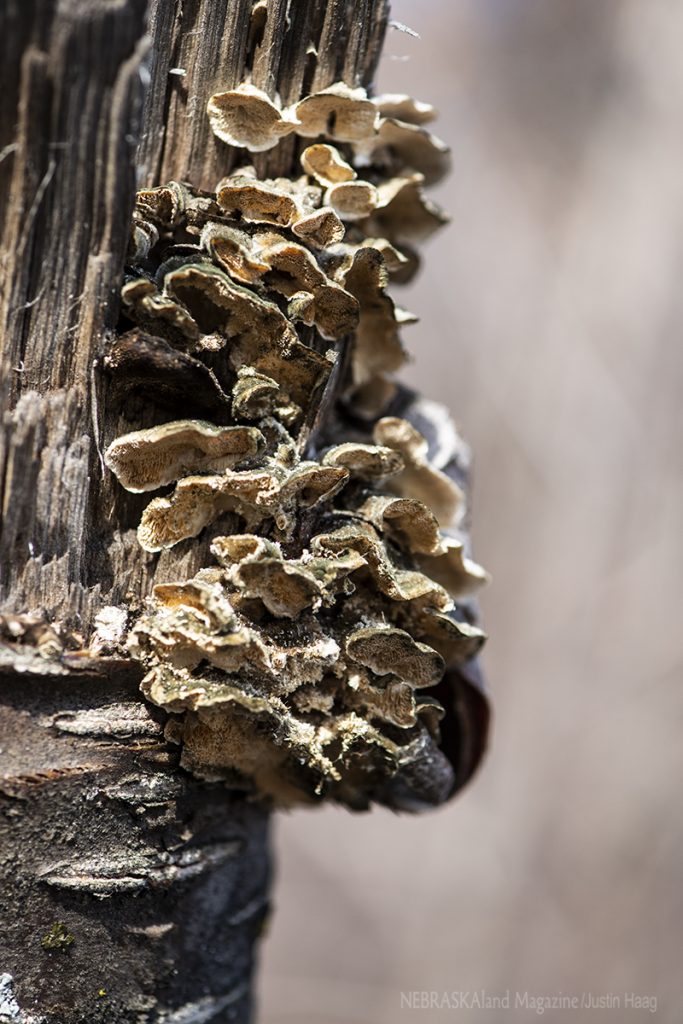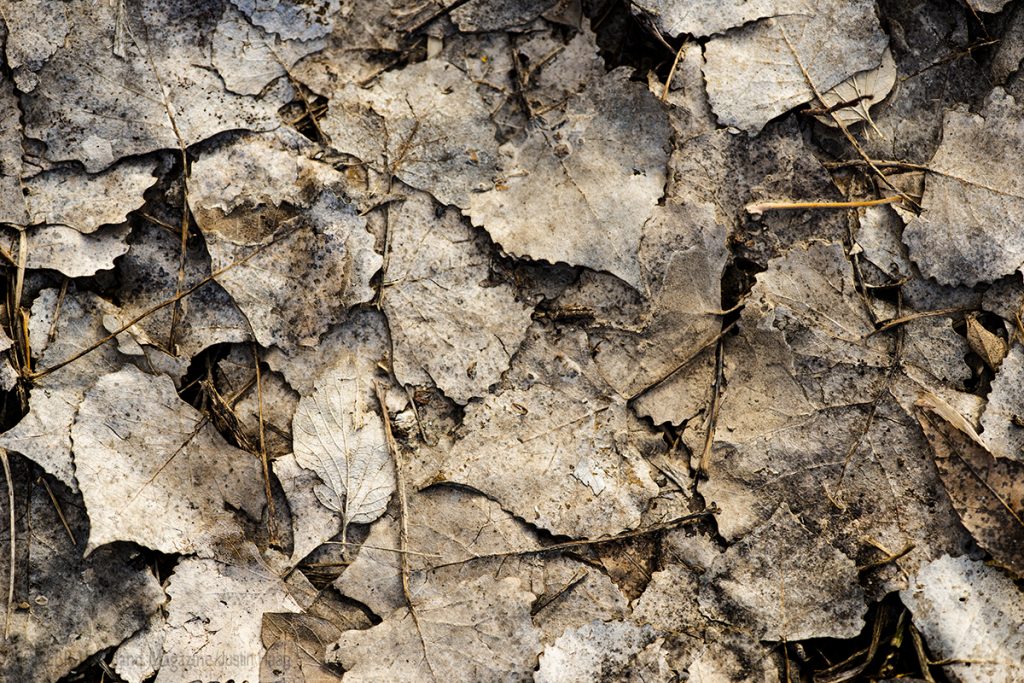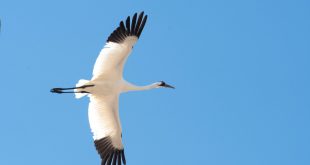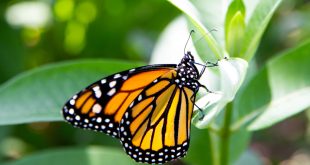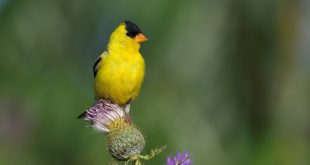Big blizzard. Historical flooding. Just a lot of general muckiness. March 2019 will be a month Nebraskans will surely want to forget, but I shot a few photos, anyway.
This white-tailed deer struggling to travel the Pine Ridge in the wake of Winter Storm Ulmer on March 15 gives you an idea of how much snow we got.
Most of that snow has since melted, as has another little dose we got last week. While not the catastrophe our friends in eastern Nebraska are dealing with, the weather has caused plenty of hardship among the rural community of the Panhandle. Cattle ranchers trying to usher in calves have had extreme challenges. With more than 30 roads closed in Dawes County alone, just getting around is a challenge.
This sunset scene on Ormesher Road north of Chadron on March 25 gives you an idea of what the White River has been up to. The river usually flows only under the bridge in the foreground in a tidy manner.
The White, which begins as a babbling trout stream in Sioux County, takes on a different appearance as it flows through clay-heavy soil north of the Pine Ridge and picks up water from coldwater streams. After all of this snow melt, that change in appearance is certainly amplified.
From the location of this photo, captured in Dawes County five miles south of the South Dakota border, the White flows north-northeast to the central part of the Mount Rushmore State. Just south of Badlands National Park, it turns east and travels the central part of the state until it joins the Missouri River at Lake Francis Case near Chamberlain. After about another 100 miles, the water reunites with the Nebraska border – about 220 miles east of where it departed the state. It is just another example of how water connects all of us.
Chadron Creek is among the streams that have been flowing strong and filling the White. Plugged culverts at this crossing at Chadron State Park created what I found to be an eye-catching water feature. The park superintendent does not seem to see much beauty in it, however.
Turkey Talk: I spent a few days joining a pair of coworkers in the Nebraska Game and Parks Commission booth at the Northwest Sport Show in Minneapolis in late March. While there, we talked to many hunters who were interested in coming to Nebraska to pursue turkeys. After doing all that talking, I am glad to see a lot of birds around and toms working their hardest to create the next generation of Nebraska’s big game bird. Seems there is a gobbler in strut around every corner. Considering the terrible road conditions, though, I would wait if I were coming from afar to hunt these birds.
The toms seem to have plenty of hens to keep them busy.
Beauty may be in the eye of the beholder, but you have to admit these fellas are good-looking.
With all of the water around, it seems a good year to be a wood duck.
Early Spring Biota: This time of year, after the snow melts and the before wildflowers are in bloom, my eyes are often drawn to fungi, mosses and lichens that decorate a leafless scene among the hardwoods. Such was the case March 27 at Gilbert-Baker Wildlife Management Area.
These basidiomycete fungi were show-stoppers.
I’m told this is an Orthotrichum moss, probably Orthotrichum pumilum. There are about 125 species of the Orthotrichum genus located throughout the world. Thanks for the touch of color, Mother Nature.
Even brown cottonwood leaves catch the eye this time of year. Not only do mats of leaves such as this provide cover for worms and other macroinvertebrates that hold up the food chain, but they also decompose and provide nutrients for future plant life. It is always interesting to see how one species supports another in nature.
And, it’s always encouraging to see how one person supports another. I wish you all the best as we strive to get back to some normalcy in a state that surely gives us an occasional dose of chaos.
 Nebraskaland Magazine
Nebraskaland Magazine

